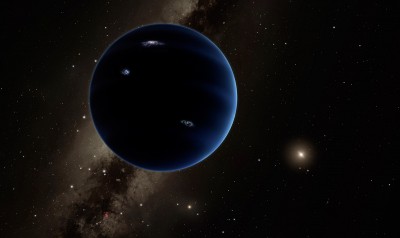
Many people all over the world were shocked and dismayed when the International Astronomical Union demoted Pluto to “dwarf planet” status at its 2006 convention. Now, researchers at the California Institute of Technology have found evidence for a possible ninth planet in our solar system that could potentially fill the hole Pluto left in our hearts.
In an article published Wednesday, “Evidence for a Distant Giant Planet in the Solar System,” Konstantin Batygin and Michael Brown, investigators in Caltech’s Division of Geological and Planetary Sciences, discussed recent discoveries concerning celestial objects in the Kuiper Belt, a region of the solar system beyond the orbit of Neptune. These findings serve as evidence for a possible ninth planet, nicknamed “Planet Nine,” in the solar system.
However, the object will not be considered for planetary status until researchers are able to attain an image of it.
“The observational front for Planet Nine is now on, and it is very feasible,” Batygin said.
He also said he expects a sighting of Planet Nine within the next five years.
“It can’t be done with a backyard telescope — it can’t even be done with a medium-grade professional telescope,” Batygin said. “You have to go to the largest telescope on earth to image this object.”
The Caltech investigators had been researching a group of objects in the Kuiper belt when they noticed a pattern in the objects’ orbits. After doing some calculations, they realized the most probable explanation for this strange clustering was the gravitational pull of a very massive object with an elliptical orbit.
In other words, the release stated that Batygin and Brown mathematically predicted the existence of a planet approximately 700 astronomical units from the sun and about 10 times the earth’s mass. Due to Planet Nine’s estimated size, Batygin said it “fields no insecurities” when compared to Pluto.
While our seeming proximity to the discovery of a ninth planet is exciting, many are skeptical of its mere existence, let alone its classification as a planet.
“The model says there is something out there, and that would be consistent with other things that can be observed,” said John Clarke, an astronomy professor in Boston University’s College of Art and Sciences and director of the Center for Space Physics. “Nobody has seen this planet, so they’re taking a risk in proposing it.”
Others criticize the way in which the investigators measured the planet’s characteristics.
“The tough part is that they’re inferring the properties of this planet based on the motion of other planets, so there’s a lot of noise,” said Philip Muirhead, an astronomy professor in CAS. “There are a lot of uncertainties in the properties of the planet. We can’t say it has a mass of definitely this plus or minus some small amount.”
One aspect of the research that Thomas Bania, an astronomy professor in CAS, said made him skeptical is that Brown was part of the team that demoted Pluto. Thus, he said, they have a history of “pushing things.”
“How much wiggle room is there in this prediction?” Bania said. “Is it really 10 times the size of the earth? Could it be much smaller? And they’re just speculating when they say it has an atmosphere.”
Despite the skepticism, the potential for a ninth planet is still great. According to Muirhead, it is unlikely that there is not a planet influencing the strange Kuiper Belt clustering.
“They considered a number of possible reasons for this clustering beyond the unlikely case that it’s random,” Muirhead said. “And they could not come up with a better scenario to cause this clustering.”
The discovery of Planet Nine could have a heavy impact on the world of astrophysics and in understanding the way our solar system fits in with the rest of the galaxy. According to Batygin, our solar system is an “oddball” because the eight planets all have circular, calm and neatly arranged orbits, while the norm in other solar systems is to have planets with highly elongated, or eccentric, orbits.
Because Planet Nine’s potential orbit is highly eccentric, Batygin said, “It might be the one thing that makes our solar system look more normal in the galactic sense.”
As for the future of Planet Nine, Clarke said it is visible and a new fascination for many people.
“[Plant Nine is] almost certainly bright enough to see if you look in the right place at the right time,” Clarke said. “I’m sure a lot of people will be looking hard trying to find this planet now. If someone does find it, it’s dramatic. Another planet in our lifetimes — that would be spectacular.”


























































































































